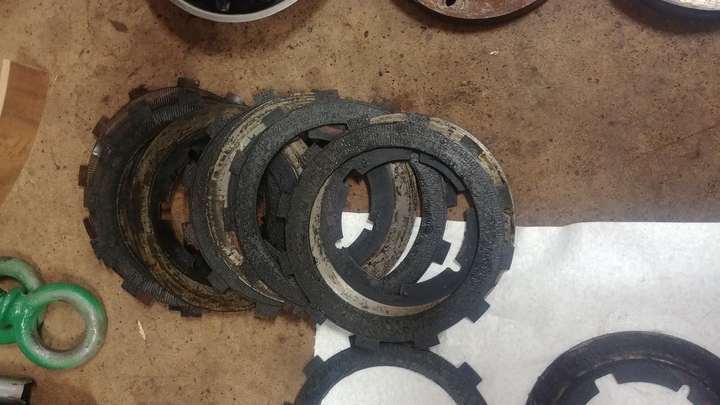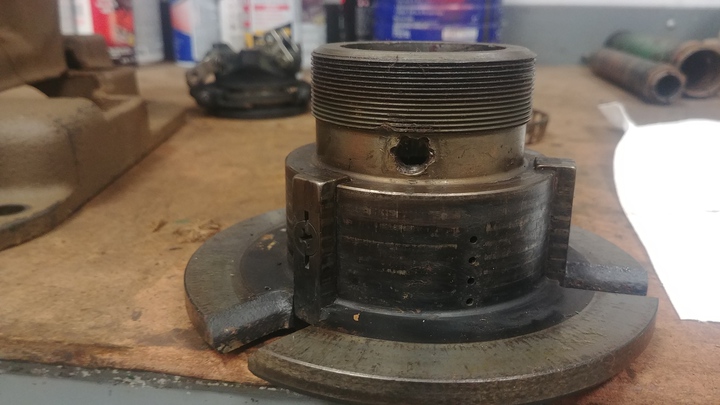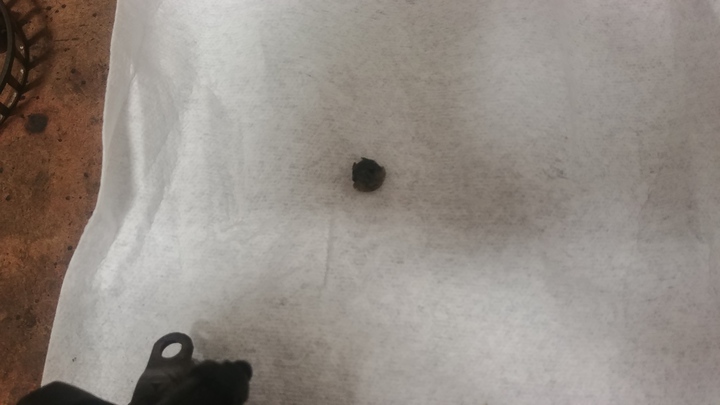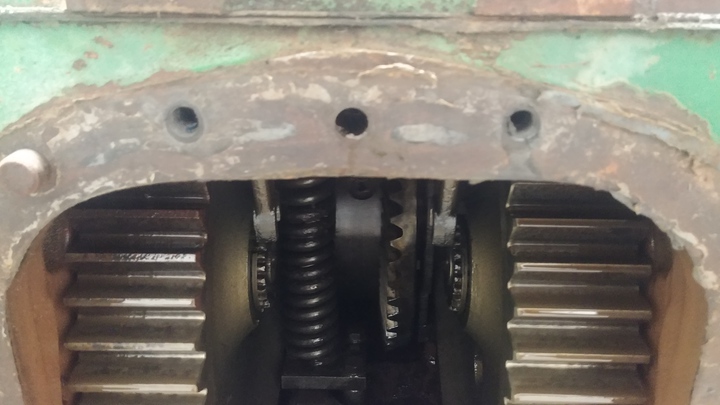So I was just going to post this on the Oliver board below but I figured it could be a good lesson for anyone and it's very much tractor related. So has anyone ever used silicone/rtv to seal up a gasket surface before and never thought twice about what could happen? In the pictures I have posted shows what happens when someone used blue rtv to seal the pto unit to the rear end housing on my Oliver 1850. Now this was done way before I bought the tractor and not by me. The quick version of the tractors back story or what I know of it is: A old farmer owned it for a few years before he passed away, supposedly a nephew of his did all the work on the tractor and took care of it. The tractor sat outside for almost 8 years before we bought it two summers ago. It finally got its turn in the shop to get a good going over and prep it for spring field work. Anyway I knew there were issues with the pto because it constantly turned while tractor was running (a condition not uncommon to Oliver's) also I could not shift it into the neutral or off position. So we removed it from the tractor and tore it down to find out what was going on with it and possibly rebuild it. So some of the issues were visible right away and others didn't pop up until complete disassembly and cleaning.
So I will explain in order of pictures: #1 and #2 - inner bearing support is cracked due to thrust washer surface getting extremely hot due to lack of oil to main shaft and clutch pack. #3 an #4 broken shift collar that engages and disengage pto clutch. #5 and #6 burnt clutch discs and someone butchered up the inner part of that holds all the clutch discs together. And finally #7 and #8 the culprit Blue RTV silicone blob that filled the oil passage in the tractors main rear end case. This port, center hole in picture #8 feeds gear oil to the pro unit top shaft and clutch pack.
So there you have it: A major falirue of bearings, clutches, and cast iron parts due to just plain ignorance on someone's part. Its not that hard to get books and information on how to rebuild these things. Also not knowing when to use the proper sealant on certain applications. It's not that hard to ask questions!!! So now I am stuck with a mess and what will end up being a very expensive repair...
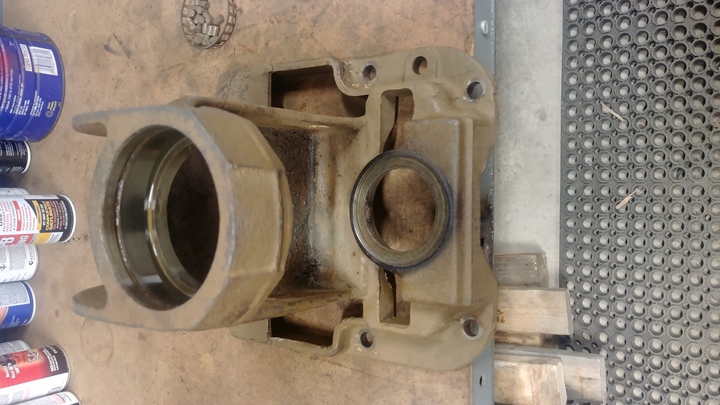
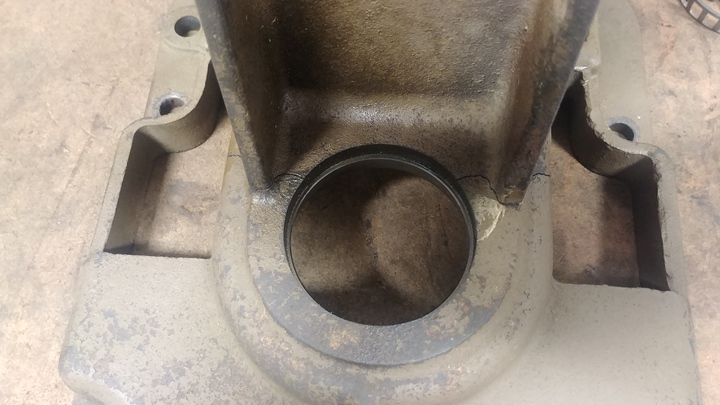
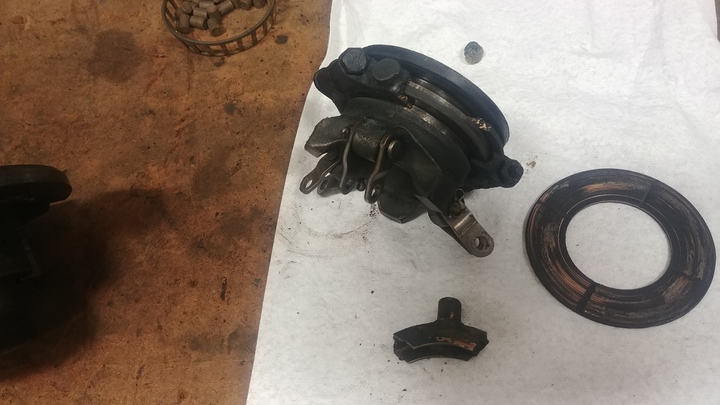
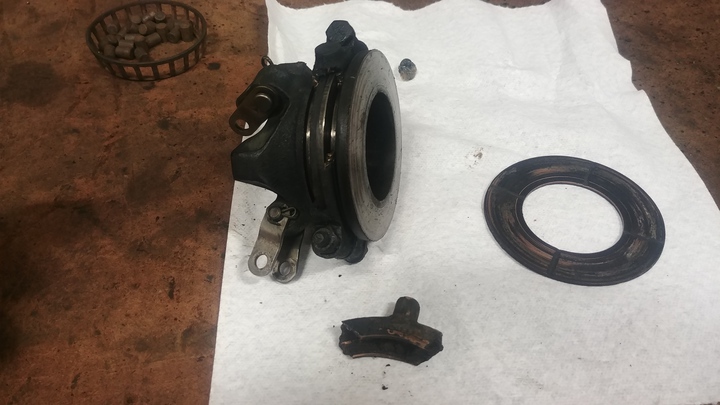
So I will explain in order of pictures: #1 and #2 - inner bearing support is cracked due to thrust washer surface getting extremely hot due to lack of oil to main shaft and clutch pack. #3 an #4 broken shift collar that engages and disengage pto clutch. #5 and #6 burnt clutch discs and someone butchered up the inner part of that holds all the clutch discs together. And finally #7 and #8 the culprit Blue RTV silicone blob that filled the oil passage in the tractors main rear end case. This port, center hole in picture #8 feeds gear oil to the pro unit top shaft and clutch pack.
So there you have it: A major falirue of bearings, clutches, and cast iron parts due to just plain ignorance on someone's part. Its not that hard to get books and information on how to rebuild these things. Also not knowing when to use the proper sealant on certain applications. It's not that hard to ask questions!!! So now I am stuck with a mess and what will end up being a very expensive repair...






